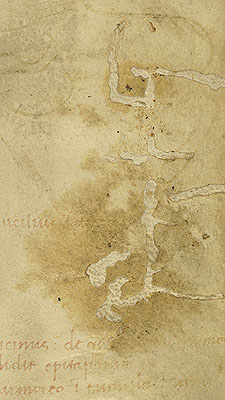
Appetite for Destruction
![]()
For every medieval manuscript that has survived into modern times, many
others have been destroyed. We know this partly from the numerous fragments
that survive, representing books that were once whole. The causes of destruction
were various. Fires engulfed libraries and obliterated untold numbers
of books. Political upheavals, such as the French Revolution, which sought
to blot out all vestiges of the hated era of "feudalism," carried
away many others. Thieves and collectors have mutilated decorative manuscripts
by removing the artwork. Yet perhaps most manuscripts were lost to less
dramatic causes, such as neglect and poor storage conditions, which exposed
books to damp, rot, and insects. Renaissance humanists in search of rare
classical texts describe visits to monasteries where they found heaps
of books moldering away, utterly abandoned. One other cause of destruction
was recycling. Since parchment was expensive, an old book might be scrapped
and its writing erased so that a new book might be written on its parchment,
or it might be cut up for use in bindings.

Copyright
© 2002 Division of Rare & Manuscript
Collections
2B Carl A. Kroch Library, Cornell University, Ithaca, NY, 14853
Phone Number: (607) 255-3530. Fax Number: (607) 255-9524
For
reference questions, send mail to:
rareref@cornell.edu
If you have questions or comments about the site, send mail to: webmaster.